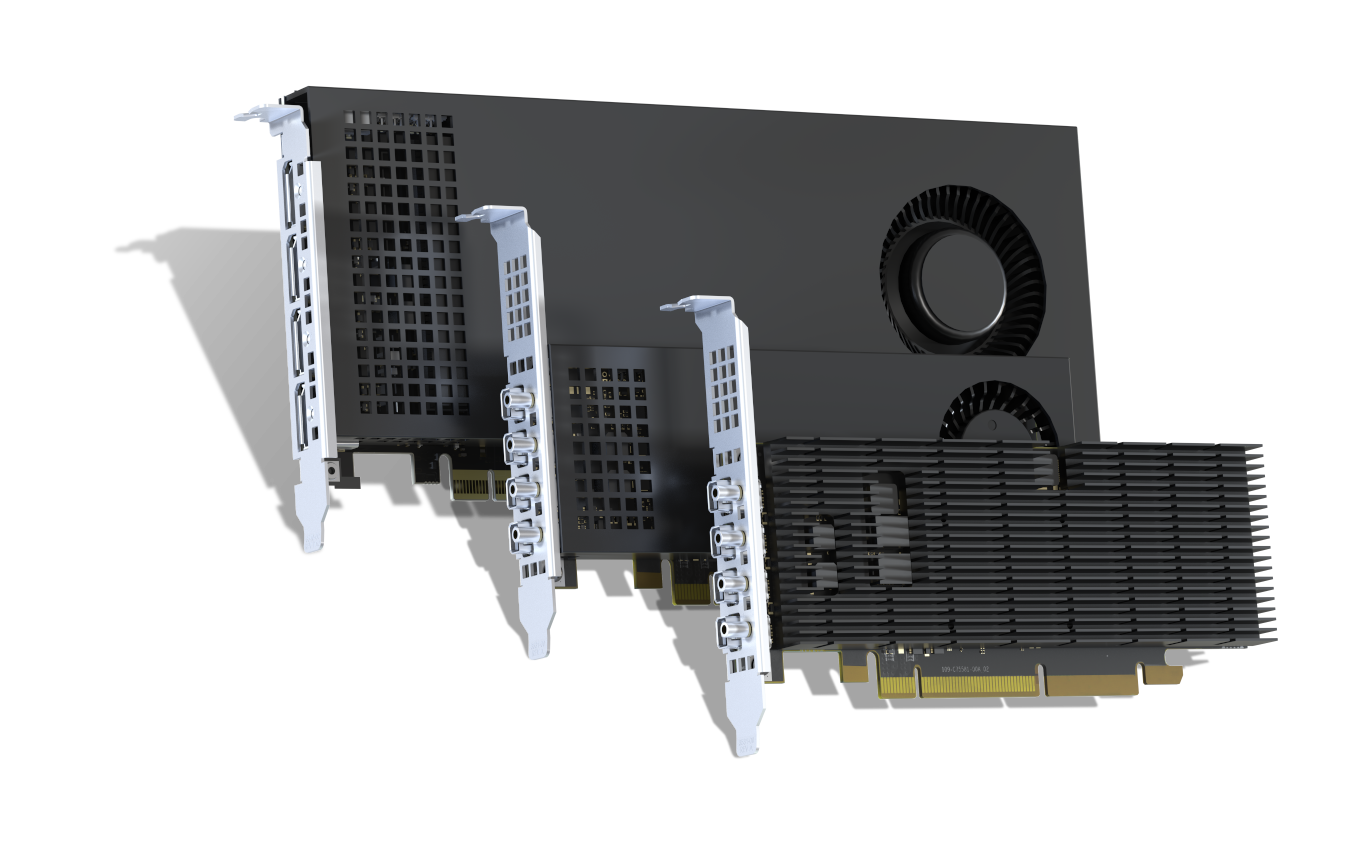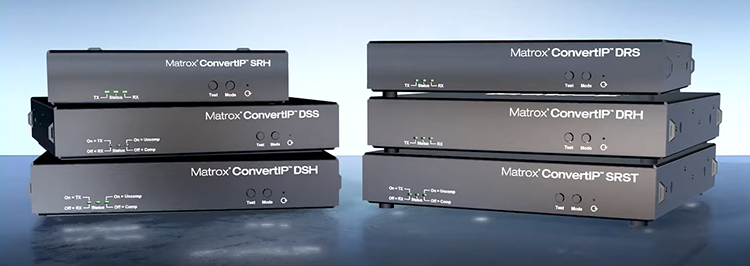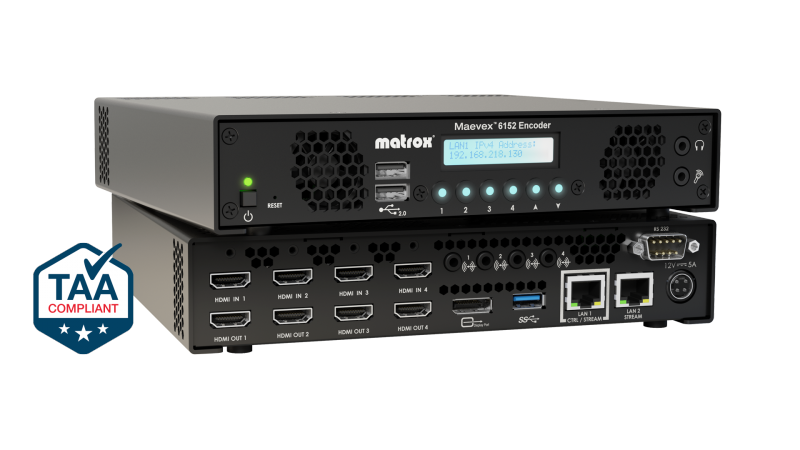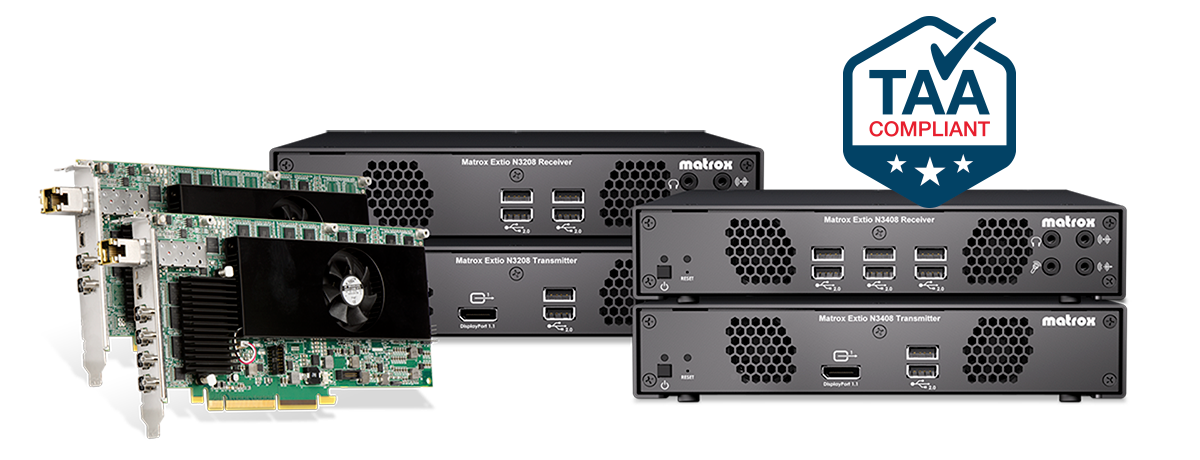Matrox Video Announces InfoComm 2023 Showcase
Story Highlights
Matrox Video announces its plans for InfoComm 2023 June 14-16 in Orlando. In Booth 2917, AV systems integrators will see how Matrox Video encoders, decoders, IP KVM extenders, and video wall products support the wide-ranging requirements of highly compressed, lightly compressed, and uncompressed IP signal transport to meet the diverse streaming, recording, extension, and visualization needs in pro AV, control room, and digital signage environments.
 “We are looking forward to InfoComm 2023 and being able to bring systems integrators and end users up to speed on all of our latest solutions,” says Alberto Cieri, senior vice president of global sales and marketing at Matrox Video. “New products, like our LUMA Pro Series graphics cards and our AVoIP, IPMX-ready ConvertIP solution, will be on display. We’ll also be offering educational sessions, and Matrox Video will have a presence with our alliance partners, including AIMS and HDBaseT. Our InfoComm showcase is action-packed.”
“We are looking forward to InfoComm 2023 and being able to bring systems integrators and end users up to speed on all of our latest solutions,” says Alberto Cieri, senior vice president of global sales and marketing at Matrox Video. “New products, like our LUMA Pro Series graphics cards and our AVoIP, IPMX-ready ConvertIP solution, will be on display. We’ll also be offering educational sessions, and Matrox Video will have a presence with our alliance partners, including AIMS and HDBaseT. Our InfoComm showcase is action-packed.”
Key products on display at the Matrox Video booth will be:
8K and HDR-ready video walls with new Matrox LUMA Pro graphics cards:
Matrox Video will feature the new Matrox LUMA Pro Series graphics cards — the low-profile LUMA A310FP and the standard-height LUMA A380P — based on Intel Arc GPUs. Engineered to power digital signage and video wall systems, these new single-slot graphics cards offer the ultimate display flexibility, supporting up to two 8Kp60, two 5Kp120, or four 5Kp60 DisplayPort 2.1 monitors. Users can also combine cards to drive a high-density-output video wall of up to 16 synchronized 5K displays. LUMA Pro Series cards have additional video wall features, including a board-to-board connector for frame-lock support, native HDCP compatibility with Matrox HDMI capture cards, the capability to create a single large canvas using multiple cards, and the hardware decoding of H.264 and H.265 streams using Matrox Mura software libraries.
All LUMA graphics cards are compatible with all the latest graphical capabilities, supporting DirectX 12 Ultimate, OpenGL 4.6, Vulkan 1.3, and OpenCL 3.0, as well as Intel’s oneAPI for compute tasks and the Intel Distribution of OpenVINO toolkit for AI development. The cards also have class-leading, hardware-based codec engines that can both encode and decode H.264, H.265, VP9, and AV1 video streams.
LUMA Pro graphics cards are designed to satisfy the demand for driving multiple screens in the mainstream graphics and pro AV markets, with a balanced combination of size, reliability, and performance to meet the requirements of different applications.
Real-time compressed and uncompressed AVoIP with IPMX-ready ConvertIP encoders/decoders and ConductIP media routing appliance and software:
 ConvertIP Series encoders/decoders enable interoperable, flexible, and scalable IP-based infrastructures delivering lossless, zero-latency 4K signals across 1, 10, and 25 GbE pro AV networks. These standards-based, fanless, PoE+, 24/7-reliable appliances make possible a new range of exceptional quality, real-time to near-real-time AV-over-IP applications, including bridging HDBaseT to AV-over-IP networks. Matrox ConvertIP products have received JT-NM badges and are confirmed compatible with many SMPTE ST 2110 products offered by dozens of brands. Available as a web server-based application packaged in a small-form-factor appliance, ConductIP gives a real-time, comprehensive view of all media content on an IP network while allowing users to organize devices based on their unique setup. ConductIP is designed to simplify content distribution in AV networks of any size and makes it possible to discover, monitor, and route any AMWA NMOS-enabled SMPTE ST 2110- or IPMX-ready device or signal.
ConvertIP Series encoders/decoders enable interoperable, flexible, and scalable IP-based infrastructures delivering lossless, zero-latency 4K signals across 1, 10, and 25 GbE pro AV networks. These standards-based, fanless, PoE+, 24/7-reliable appliances make possible a new range of exceptional quality, real-time to near-real-time AV-over-IP applications, including bridging HDBaseT to AV-over-IP networks. Matrox ConvertIP products have received JT-NM badges and are confirmed compatible with many SMPTE ST 2110 products offered by dozens of brands. Available as a web server-based application packaged in a small-form-factor appliance, ConductIP gives a real-time, comprehensive view of all media content on an IP network while allowing users to organize devices based on their unique setup. ConductIP is designed to simplify content distribution in AV networks of any size and makes it possible to discover, monitor, and route any AMWA NMOS-enabled SMPTE ST 2110- or IPMX-ready device or signal.
Quad-4K streaming and recording with Maevex 6100 Series encoders and decoders:
Maevex 6100 Series brings the benefits of multichannel video transport over LAN, WAN, and the internet for collaboration-focused environments. With high-quality, low-bandwidth, low-latency, H.264-based streaming and recording and zero-latency pass-through for real-time output of AV content, operators can distribute critical content to any location to facilitate informed, accurate, real-time decision-making. They can also enhance situational awareness and monitoring operations using Maevex 6100 Series encoder and decoder-based AV-over-IP platforms to transmit content to personnel located across different campuses, cities, and continents.
4K IP KVM matrix with multiview using Extio 3 IP KVM extenders:
Extio 3 IP KVM extenders create productivity-enhancing remote workspaces that allow control room operators to simultaneously monitor and control multiple centralized workstations from any location. The Extio 3 solution is a KVM matrix system over IP that features 4K/quad-HD extension and switching support alongside the Tile View multiview feature. It permits operators to securely monitor and control up to four systems on one full-HD or 4K display — using a single keyboard and mouse — over standard Gigabit Ethernet LAN, WAN, and internet networks. To complement Extio 3, Matrox Video also plans to debut a new keyboard and mouse switch to build multimonitor operator workspaces with seamless mouse switching.
IPMX and open standards:
With ConvertIP, Matrox Video’s first IPMX-ready AVoIP solution, already in use, one of the company’s key focuses will be continuing to educate the industry about IPMX (Internet Protocol Media Experience). IPMX is a set of open standards and specifications created by AIMS (the Alliance for IP Media Solutions) to provide a consistent and interoperable way to transport AV over IP in the pro AV industry. IPMX is IP-based, so it can work on 1 Gbps to 100 Gbps networks and beyond, including wireless. This is made possible by a standard compression scheme that enables ultralow latency while maintaining excellent quality. It can also support true, fully uncompressed quality if needed. IPMX can transport any resolution, even beyond 8K, in 4:4:4 10-bit color, or it can target a 4:2:2 color space to remain consistent with the quality of other sources and elements in the workflow.
